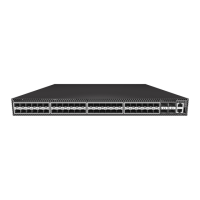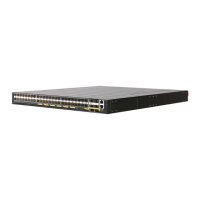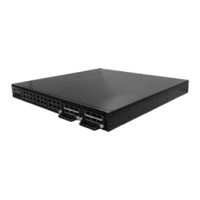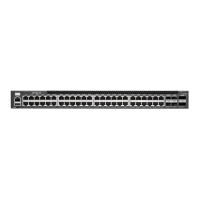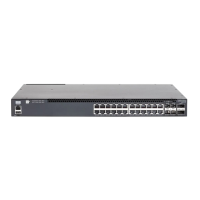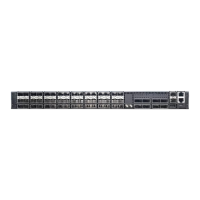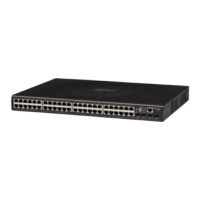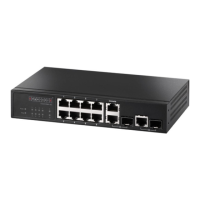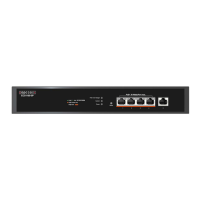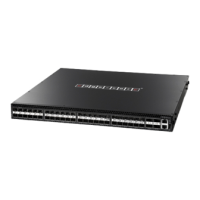Chapter 21
| Data Center Bridging Commands
Enhanced Transmission Selection Commands
– 554 –
Enhanced Transmission Selection Commands
Enhanced Transmission Selection (ETS) provides a means to allocate link
bandwidth to different priority groups as a percentage of total bandwidth. These
settings are then advertised to other devices in a data center network through
DCBX ETS TLVs. Peer devices accept ETS traffic class group and bandwidth
information TLVs from auto-upstream devices and propagate it to auto-
downstream devices.
The priority of a packet arriving at an interface is grouped into a TCG at the first
level of scheduling, ensuring that the minimum bandwidth is provided. The packet
is then steered into the appropriate outbound CoS queue through a mapping table
by a second level scheduler. Using ETS, the required bandwidth is provided to each
TCG. Within each TCG, multiple traffic classes share the bandwidth of the group.
Configuration Guidelines
Take the following steps to configure ETS:
1. Map CoS queues to TCGs for the egress ports using the traffic-class map
command.
2. Configure the bandwidth allocation for all TCGs using the traffic-class weight
command.
3. Enable the required scheduling algorithm for each TCG using the traffic-class
algo command.
4. Ensure that the 802.1p priority present in the frames entering the ingress ports
is set to be trusted using the qos map trust-mode command.
5. Set the ETS mode to auto-negotiation through DCBX or force it into on state
using the ets mode command.
Table 111: ETS Commands
Command Function Mode
ets mode Sets the ETS mode to negotiate capability through
DCBX or by forcing it to on state
IC
traffic-class algo Sets the queue scheduling algorithm assigned to a
traffic class group
IC
traffic-class map Maps a given priority to a traffic class group IC
traffic-class weight Configures the bandwidth allocation for all TCGs IC
show ets mapping Displays priority to TCG mapping PE
show ets weight Displays the bandwidth allocation for selected TCGs PE
